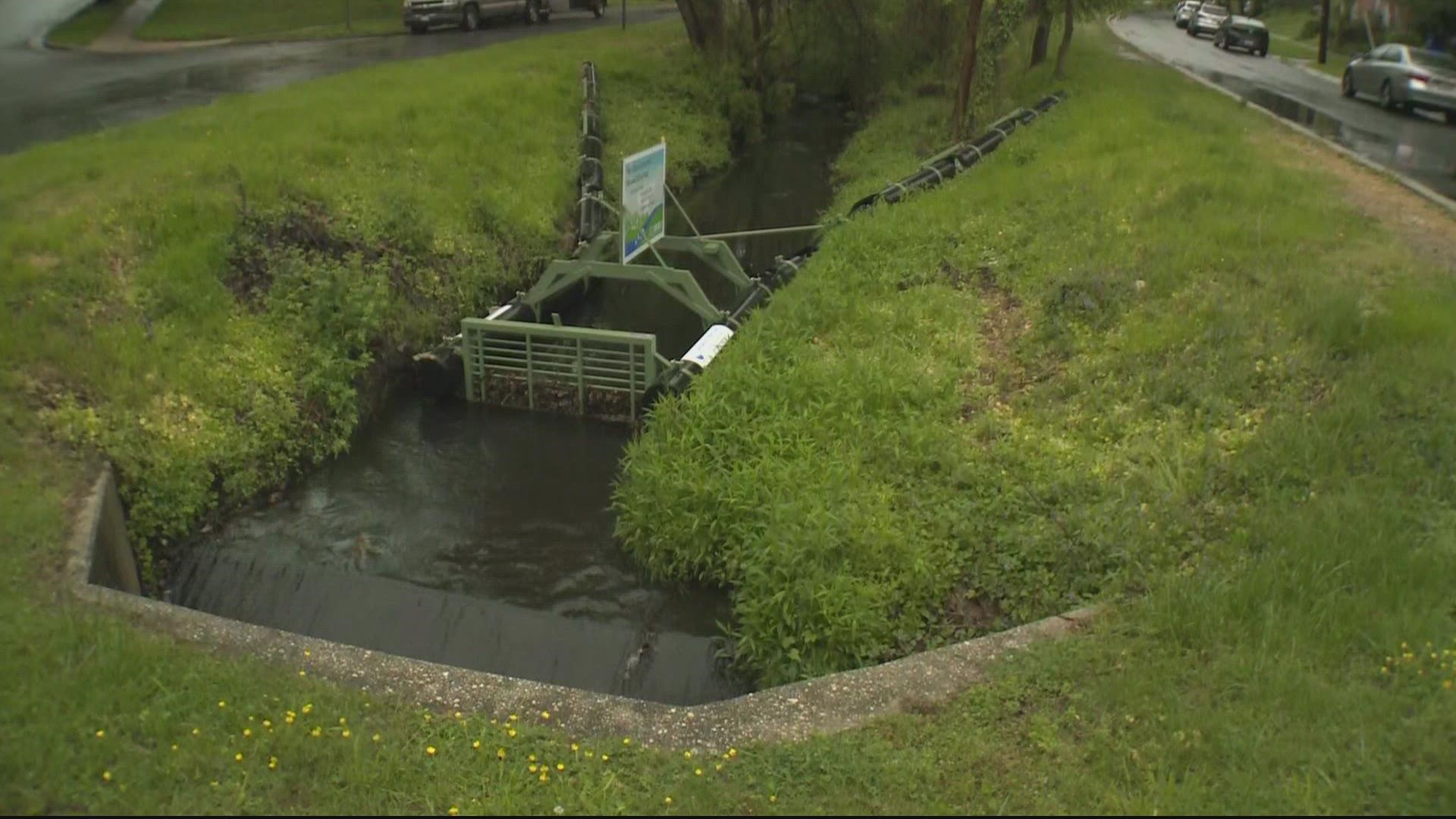MONTGOMERY COUNTY, Md. — It's a wet and dreary Friday in Montgomery County, and three plastic water bottles and a piece of Styrofoam sit in a stream. The steady, all-day rains have pushed the trash down storm drains and into this tributary on Lockridge Drive.
Last year, these four pieces of trash could have continued their trip down into the Anacostia River, the Potomac, and eventually the Chesapeake Bay. But now, a green metal grid stops them.
“Trash is a major problem on the Anacostia watershed,” said Trey Sherard, a riverkeeper at Anacostia Riverkeeper, a nonprofit working to clean and protect the Anacostia.
The EPA has established a total maximum daily load for the Anacostia River, making it, along with the Los Angeles River and Baltimore Harbor, the only three rivers in America to have a maximum amount of allowed trash.
“It’s really just a pollution diet,” Sherard said.
A critical part of the pollution diet is found in Montgomery County: the area's first litter trap. The trap floats in the stream, stops trash and keeps it from flowing into the Anacostia River. The trap went in before Christmas with an official ribbon-cutting ceremony held in April. Storm drains and a creek make up the tributary, all flowing downhill into the trap.
"All of the storm drains come back to this creek, meaning that all of the trash gets into this creek,” Sherard said. “This is where all those storm drains come before they come into the river. And then this is where all that trash comes to, too."
Montgomery County’s trash trap makes a total of eight for the Anacostia watershed. There are four in D.C. and four in Prince William County. The first went in about 13 years ago in Washington's Kenilworth Park.
This site was selected as a pilot for the water traps in Montgomery County and is funded by the Montgomery County Watershed Restoration and Outreach Grant Program.
The Riverkeepers work with the Montgomery County Conservation corps, a youth workforce development program, to pull trash out. The kids come out about every other week and sort the trash by category, weigh, and count the trash.
"So, every week to every two weeks, depending on how much it's rained, we get a count on all the different kinds of trash," Sherard said. "So, not just total weight, but actually broken out so that we can start reporting to the county what we’re seeing."
Sherard said there's one litter item he isn't seeing often: plastic bags. After area laws, in Montgomery County and Washington’s plastic bag fees started, he noticed a decline in plastic bags as litter.
“Bags used to be the number one thing you’d see,” said Sherard. “Now they’re not even top 10.”
But Sherard said he is still seeing plastic bottles. Sixty percent of the trash floating in the Anacostia River, by weight, is single-use plastic bottles.
“We want to see the elected officials take plastic, especially bottles, more seriously,” Sherard said
He is hoping to get people to help raise local leaders’ awareness for single-use plastic bottles. He wants people to take pictures of plastic bottles when they find them as litter, tag their elected officials and Anacostia Riverkeeper on Facebook, Twitter, or Instagram, and ask what they’re doing about single-use plastic bottles.

